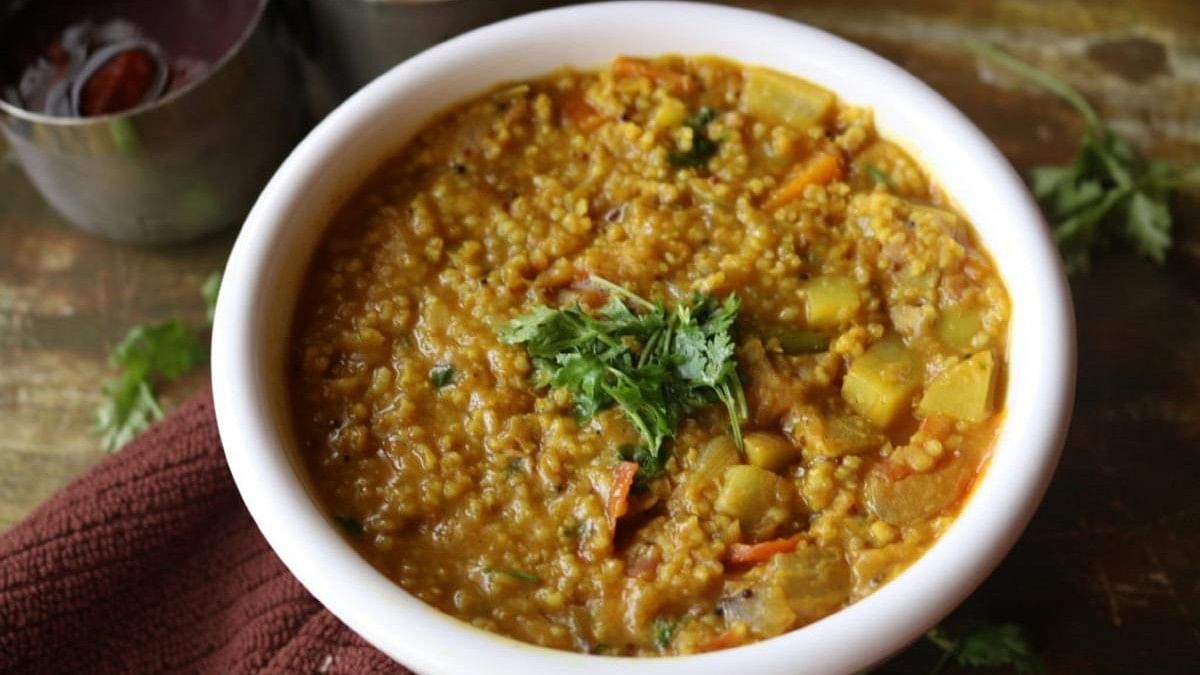
Representative image of the Bisi Bele baath.
Credit: iStock Photo
My fitness-obsessed son thankfully makes his own meals with measured calories. And is a big advocate of ‘one pot, one dish.’ He insists that it saves time and effort. I assure him that my ancestors were the true masters of this art long before it made its appearance on his Instagram feed.
Vijayadashami, the tenth day of Dasara, is a time when tradition meets grandeur and history unfolds in the most extraordinary way in Mysuru. Like it is today, back in the 1940s—as my mother and her siblings tell me—this day was nothing short of a spectacle. The added attraction then was the Maharaja of Mysuru himself leading a procession that captured the hearts of Mysureans and visitors alike. The grand affair commenced at the Amba Vilas Palace and concluded at the Banni Mantapa. In the midst of this royal pomp, something extraordinary was cooking behind the scenes—a culinary tradition in my grandmother’s kitchen.
The family legend has it that my maternal grandmother’s home in Mysuru hosted at least 60 people from different parts of the state who came to see the grand procession. But it wasn’t just the Maharaja they came to see; it was the gastronomic delight that awaited them in my grandmother’s kitchen.
It was understandably a huge task for the lady of the house to entertain such a large tribe in one go, finish the puja rituals, feed them, and herd them all to the vantage points on time to catch the procession. But she knew how. The trick was to feed them well and keep them wanting for more.
That’s how ‘one pot, one dish’ came to be the star in my grandma’s and many households in Mysuru, on Vijayadashami—the aromatic and flavourful bisi bele baath. A Vijayadashami staple to this day in our home, the dish is a medley of lentils, rice, vegetables (completely optional), and a fragrant spice blend that is unique to every kitchen.
One-pot cooking wasn’t limited to just bisi bele baath. Another dish that graced the spread was again a one-pot dessert, Hayagriva, a delightful sweet made of bengal gram, jaggery, and dry fruits seasoned with poppy and sesame seeds. The two are a testament to how a single pot could produce flavours that danced on the taste buds! What was hurriedly eaten in the morning before going to the procession was relished for dinner after the procession!
While the internet brims with one-pot wonders and time-saving recipes, I believe my grandmother was the original maestro of this art.